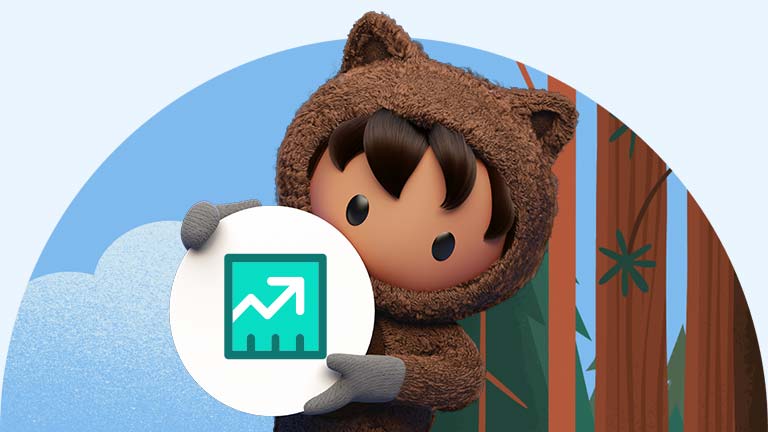A Guide to the Sales Follow-up Process using AI



Learn the basic outlines of the sales follow-up process and how it’s being transformed by new technologies and approaches.
Your marketing campaign has been launched and it’s starting to show results. Months of planning and late nights are paying off. People are showing interest in your products or services.
You can’t let this opportunity slip through your fingers. The sales follow-up process gives you a chance to turn interest into a purchase. But your outreach needs to be relevant and useful. Our State of the Connected Customer 2023 research shows that 80% of customers say the experience a company provides is as important as its products and services, and 88% of customers say good customer service makes them more likely to purchase again.
So, how can you make sure you create a positive impression? Read on to understand the sales follow-up process and how businesses are using AI to increase sales and boost growth.
The future of sales follow-up: Using AI to increase sales
The sales follow-up process isn’t as simple as reaching out to every person who’s clicked on an ad, downloaded some content, or shared an email address. Every interaction isn’t equal, and some people will be more ready to buy than others. Your challenge is to prioritise leads and engage them with relevant, useful information that guides them toward making a purchase.
As you probably know, this used to be a manual process that took a lot of time, but now generative AI is transforming productivity. AI can identify the most promising leads and automatically provide sales teams with personalised, well-written content to use for outreach, all at a large scale.
- Research from the 8th edition of our State of Marketing report suggests that 62% of marketers use AI, compared to 90% that use a CRM system. This indicates that while AI has been embraced by a majority — clearly demonstrating the value marketers see in it — it’s not universally adopted yet.
As AI matures, it’s putting rocket boosters on what’s possible in sales. For example, Sales AI uses machine learning to harness big data from your database and create well-informed, highly effective strategies to reach out to your leads. Einstein uses this data to create relevant, personalised content and messaging at pace and at scale. With these technologies supporting your CRM, your sales team can spend less time crafting content and more time engaging directly and building trust with prospects. This all comes together to drive results in the follow-up process.
So we know AI is a useful tool for sales follow-up, but what does this process look like?
Sell faster, smarter, and more efficiently with Sales Cloud.
Want to learn how the #1 AI CRM built on the Einstein 1 Platform can help you? Engage buyers effectively, improve seller productivity, close deals faster, and grow revenue on the most complete sales platform.


The sales follow-up process: From lead generation to contact to follow-up to sale
Your marketing team’s lead generation is all in vain if your sales team doesn’t collaborate with them to properly follow up after the initial contact. Once leads are generated — whether through organic website traffic, a special offer, webinar, print, or online advertising — your sales team is responsible for making the initial contact.
But what happens after contact is established is crucial. How should you structure the follow-up process? How do you establish the “who, when and what” of sales follow-ups, create a sales plan that’s easy to follow, and effectively close deals? Let’s zero in on this middle section of the sales cycle and analyse its components.
Tailored approaches based on data: Who, when, what?
1. Determining which leads are ripe for follow-ups
Once your marketing and sales teams have delivered leads to the top of the sales funnel, how do you decide which leads should be contacted and given priority when planning sales follow-ups?
Lead scoring allows you to decide which leads are Sales Qualified Leads (SQLs) — leads that are likely to result in sales. These aren’t to be confused with Marketing Qualified Leads (MQLs) — leads likely to be open to marketing efforts, but not yet as likely to buy as SQLs.
Another key term in the lead scoring process is Customer Lifetime Value (CLV). This metric projects how much value this lead is likely to have for your business in the future.
Predictive lead scoring using AI takes a lot of the heavy lifting away from sales and marketing teams. It uses data to not only identify the strongest leads but to target them in the best way and monitor the impact of different methods. A Salesforce survey of sales teams using AI revealed that 98% of them think it improves lead prioritisation.
Einstein Lead Scoring is one of the solutions available to automate lead scoring with AI. It’s available in Sales Cloud and Marketing Cloud Account Engagement depending on whether lead scoring is handled by your sales or marketing team.
2. Timing is everything: When should you follow up?
You’ve got a handle on lead scoring, but when is the best time to follow up? One key principle here is to follow up while the contact with the lead is still fresh. You don’t want to let your best sales leads lose interest or be contacted by a more persistent competitor.
With so much manual work needed to create relevant, tailored communications for even one lead, this can be where the sales follow-up process often falls apart. By using AI, you can automate much of this process to make it easy for your sales team to follow up quickly. Products such as Einstein 1 provide AI tools to help you personalise every experience along the customer journey with ease.
Having streamlined this process, you now have time to reach out to leads that are slightly less promising, too. While you should prioritise the best leads, okay leads might also become great leads if your sales follow-ups are delivered at the right time.
Discover our State of Sales Report.
Uncover the latest insights driving productivity and efficiency for more than 7,700 sales professionals.

3. Say what? Using AI-written content
Once you’ve established who your SQLs are and you’ve a plan in place to schedule your follow-up contacts, how do you contact leads?
Decisions need to be made about two aspects of follow-up communication: One is the content, and the other is the method of communication. Here are some tips for crafting your follow-ups:
- Offer your leads something valuable when you follow up: This is where alignment between sales and marketing teams is crucial. Your marketing team will likely have high-quality content tailored to your leads’ interests already. Don’t reinvent the wheel in the sales department, but rather encourage collaboration among your team.
- Present your business case clearly: Don’t assume your leads were 100% clear the first time. Einstein AI can help you structure your content in a logical order with easy-to-understand language.
- Don’t make empty contacts: The last thing you want your follow-ups to generate is annoyance. Don’t bother your leads unless you’ve got something to say and something to offer.
- Generative AI is there to help you: Do you know how to write a strong prompt for generative AI? Understanding how to work with it effectively will help you create personalised content for all your leads at a fast pace.
- Choose formats based on data: Your sales lead database should contain the information you need about your leads’ behaviour and preferences. Are they reluctant to answer emails? Do they respond to your web-based promotions? Have you simply asked them how they’d like to be contacted? By getting feedback on preferred methods of communication during sales calls and other contacts, you involve your leads in the communication process. Your follow-ups will be more effective if you meet your leads where they want to communicate.
In your company, they trust: How generative AI will change commerce
One of the big challenges with AI is trust. Trust is one of the most valuable assets in CRM and can be difficult to establish. Customers are rightly concerned about how businesses are using their data in combination with AI. A 2023 KPMG study found that 61% of people are wary about trusting AI systems. Our own research shows that 68% of customers say advances in AI make it more important for companies to be trustworthy.
So, how do you gain and nurture trust in your customer relationships with AI-powered follow-ups?
As useful as AI technology is, human relationships are still difficult for machines to master. Using AI to uncover insights and create content and communications is a significant advantage. And answers the question ‘How is generative AI important for business?’ But it’s not enough on its own. A follow-up must have human input to create an authentic connection — the AI is an assistant supporting the sales professional.
At Salesforce, we believe the benefits of AI should be accessible to everyone. But it’s not enough to deliver only the technological capabilities of AI — we also have an important responsibility to ensure that AI is safe and inclusive for all. We take that responsibility seriously and are committed to providing our employees, customers, and partners with the tools they need to develop and use AI safely, accurately, and ethically.
Make CRM + AI + Data your trusted formula.
Whether you’re just starting out with AI or you’re already innovating around the technology, read this guide to strategise effectively, embrace new possibilities, and answer important questions about the benefits of AI.
























